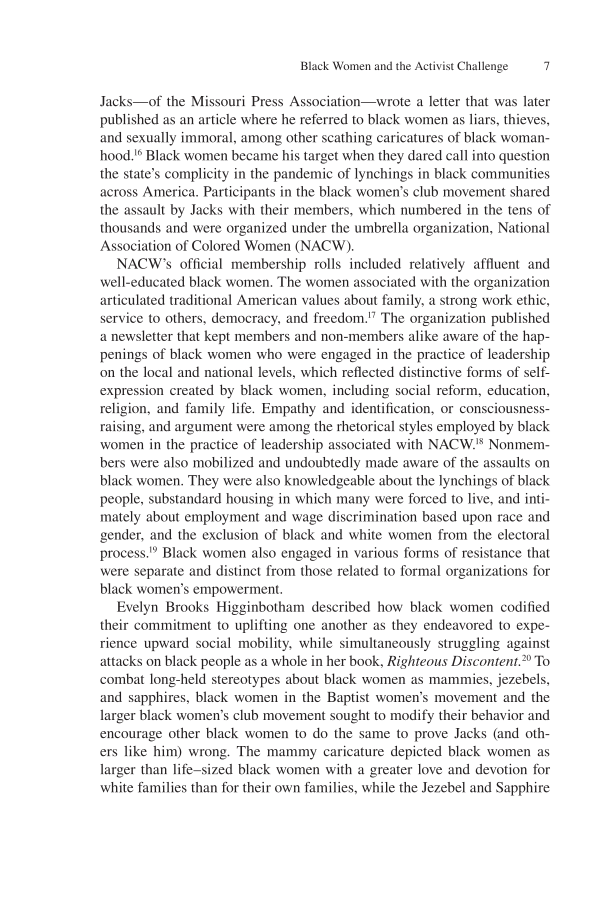Black Women and the Activist Challenge 7 Jacks—of the Missouri Press Association—wrote a letter that was later published as an article where he referred to black women as liars, thieves, and sexually immoral, among other scathing caricatures of black woman- hood.16 Black women became his target when they dared call into question the state’s complicity in the pandemic of lynchings in black communities across America. Participants in the black women’s club movement shared the assault by Jacks with their members, which numbered in the tens of thousands and were organized under the umbrella organization, National Association of Colored Women (NACW). NACW’s official membership rolls included relatively affluent and well-educated black women. The women associated with the organization articulated traditional American values about family, a strong work ethic, service to others, democracy, and freedom.17 The organization published a newsletter that kept members and non-members alike aware of the hap- penings of black women who were engaged in the practice of leadership on the local and national levels, which reflected distinctive forms of self- expression created by black women, including social reform, education, religion, and family life. Empathy and identification, or consciousness- raising, and argument were among the rhetorical styles employed by black women in the practice of leadership associated with NACW.18 Nonmem- bers were also mobilized and undoubtedly made aware of the assaults on black women. They were also knowledgeable about the lynchings of black people, substandard housing in which many were forced to live, and inti- mately about employment and wage discrimination based upon race and gender, and the exclusion of black and white women from the electoral process.19 Black women also engaged in various forms of resistance that were separate and distinct from those related to formal organizations for black women’s empowerment. Evelyn Brooks Higginbotham described how black women codified their commitment to uplifting one another as they endeavored to expe- rience upward social mobility, while simultaneously struggling against attacks on black people as a whole in her book, Righteous Discontent.20 To combat long-held stereotypes about black women as mammies, jezebels, and sapphires, black women in the Baptist women’s movement and the larger black women’s club movement sought to modify their behavior and encourage other black women to do the same to prove Jacks (and oth- ers like him) wrong. The mammy caricature depicted black women as larger than life–sized black women with a greater love and devotion for white families than for their own families, while the Jezebel and Sapphire
Document Details My Account Print multiple pages
Print
You have printed 0 times in the last 24 hours.
Your print count will reset on at .
You may print 0 more time(s) before then.
You may print a maximum of 0 pages at a time.




































































































































































































